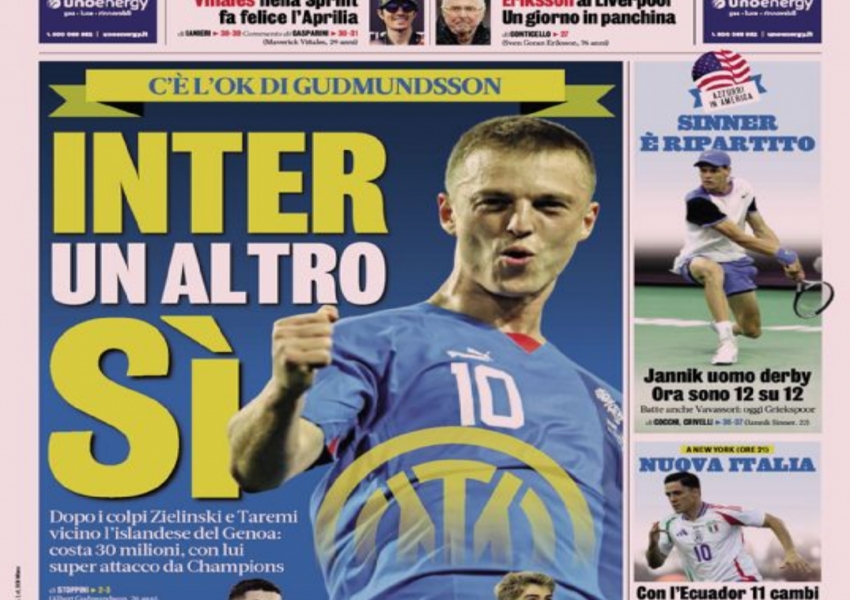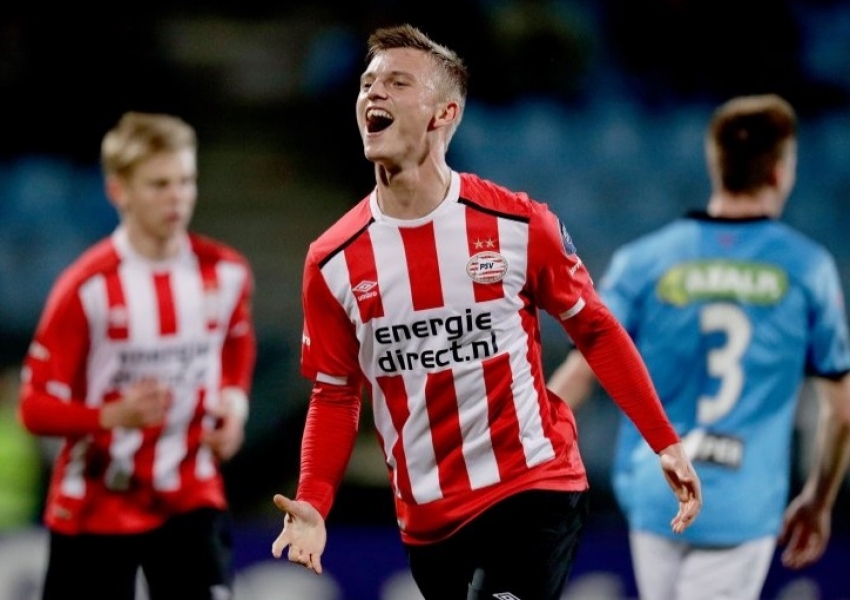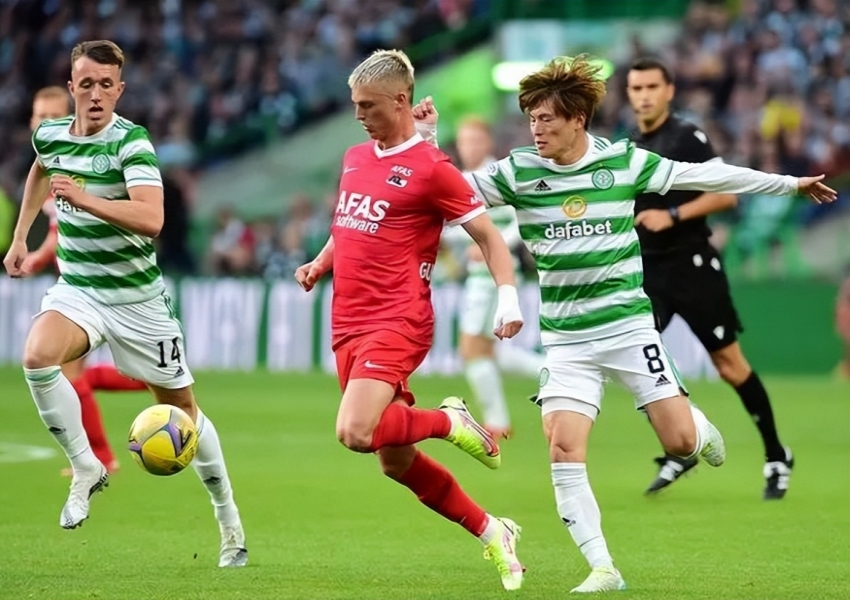A €30 Million Striker Says Yes to Inter: The Nerazzurri Prepare for Another Frattesi-Style Deal
Inter Milan CEO Giuseppe Marotta has officially announced that he will be leaving the club when his contract expires in 2027. This isn’t breaking news, as Marotta has previously stated that Inter would be the final club of his career. Historically, sports executives have often transitioned to roles within football federations or Olympic committees, focusing on youth development once they reach an age where the intense demands of club management become untenable. Given Marotta’s esteemed reputation and professionalism, it is widely believed that he will continue to serve Inter diligently until his departure.

Recently, Italian media have speculated about the potential sale of Inter. However, sources have confirmed that regardless of whether Inter's majority shareholder remains Oaktree Capital, Steven Zhang, or another yet-to-be-revealed entity, Marotta will continue to be at the helm of Inter’s sporting operations. This is because any potential owner would want to maintain the club’s current competitive edge. Thus, despite uncertainties about Inter’s future ownership, the club's transfer strategy continues to follow Marotta’s blueprint.

Marotta’s Signature Transfer Strategy
Marotta’s approach to the transfer market is renowned for its creativity and fiscal prudence. Major splashes, such as the €85 million spent on Romelu Lukaku, are rare and not representative of his typical dealings. Italian media generally categorize Marotta’s transactions into three main types:

Free Transfers: Examples include signings like Hakan Calhanoglu, Henrikh Mkhitaryan, and Andre Onana, with upcoming additions such as Piotr Zielinski and Mehdi Taremi.
Low-Cost Deals and Hidden Gems: These include acquisitions like Francesco Acerbi, Matteo Darmian, and recent signings such as Kevin Paredes and Tajon Buchanan.
High-Price, Low-Cash-Flow Pressure Deals: These transactions involve significant price tags but use various financial mechanisms to ease cash flow pressures, such as deferred payments or player swaps. Notable examples include Alessandro Bastoni, Nicolo Barella, and Davide Frattesi.
Marotta often emphasizes the importance of "managerial creativity" in navigating Inter’s financial constraints. The club’s financial challenges are not just about increasing revenue and reducing costs but also managing extremely tight cash flow. Since the pandemic, Inter has faced annual deficits, even after reaching the UEFA Champions League final last season. Despite the decreasing deficit trend, this season is projected to see a deficit of around €40 million. An economic entity continuously running a deficit requires external funding to sustain operations; otherwise, cash reserves will deplete. During Massimo Moratti's era, the majority shareholder injected €1.2 billion to stabilize cash flow. In 2023, Steven Zhang borrowed €51 million from Oaktree Capital at a high interest rate to bolster Inter’s cash flow, but he is now limited in his capacity to provide further financial support.
This cash flow tightness significantly influences Inter’s transfer strategy. Under current conditions, any new signings must be structured to minimize immediate cash outlays. Mechanisms like using vouchers, loan-to-buy deals, and extended payment periods are essential. Without these conditions, Inter would struggle to secure high-value signings. This is why, during last summer’s search for strikers, Inter missed out on several Premier League and Ligue 1 targets but managed to execute the Frattesi deal. Some fans questioned why Inter could afford Frattesi’s €40 million transfer but not spend €20 million on Alvaro Morata. The core reason lies in cash flow management. Frattesi’s deal involved a loan-to-buy arrangement with part of the fee offset by Andrea Pinamonti's deferred transfer payments, minimizing cash flow impact. Conversely, some deals require immediate cash outlay, which poses significant challenges for Inter.
The Pursuit of Gudmundsson
Today’s front page of Gazzetta dello Sport highlighted: “Gudmundsson Says Yes to Inter.” The €30 million transfer is now a possibility. Previously, Inter's interest in Albert Gudmundsson was merely speculative. Now, the club has taken concrete steps. Testing the player's interest in joining is the first move, and Inter has received a very positive response from the Icelandic international, who is keen on moving to the club. This is promising news; despite constant negative press, particularly from media based in the capital, Inter's appeal to players remains strong.
However, as previously mentioned, the challenge in securing Gudmundsson lies not only in his €30 million price tag but also in the payment structure, transaction methods, and cash flow pressure. Inter aims to structure the Gudmundsson deal similarly to the Frattesi transfer: a loan-to-buy agreement with an extended payment period, ideally involving player swaps or deferred payments. If these conditions are met, the transaction becomes feasible. According to Gazzetta dello Sport, Genoa is open to negotiations regarding a loan-to-buy structure and an extended payment timeline, but they are hesitant about accepting player swaps due to their financial difficulties. This remains the main obstacle.
Building a Champions League-Caliber Attack
Should Gudmundsson join, Inter would boast a “Champions League-level” attack. Next season, Inter’s potential forward lineup could feature Argentina international Lautaro Martinez, France international Marcus Thuram, Champions League veteran Mehdi Taremi, and Iceland international Albert Gudmundsson (who has 36 caps and 9 goals for Iceland). Such a lineup would bolster Inter’s confidence on the European stage. Although Gudmundsson has limited experience in European competitions, his efficiency is notable. During his time at PSV Eindhoven and AZ Alkmaar, he amassed 1,178 minutes in European competitions (Champions League, Europa League, and Conference League), scoring 8 goals. His dribbling, long-range shooting, and precise passing would add valuable dimensions to Inter’s attack.
Gudmundsson’s willingness to join provides Inter with a significant opportunity. It is now up to Marotta and his team to overcome the financial and logistical hurdles to finalize another Frattesi-style “high-price, low-pressure” transfer. This move would not only enhance Inter’s squad but also demonstrate Marotta’s continued expertise and strategic acumen in navigating the transfer market amidst financial constraints.
As Marotta approaches the final years of his tenure, his focus remains on strengthening Inter and ensuring the club remains competitive at the highest level. The successful acquisition of Gudmundsson could be a pivotal step in achieving these goals.
Copyright Statement:
Author: mrfootballer
Source: Mrfootballer
The copyright of this article belongs to the author. Reproduction is not allowed without permission.
Recommended Blog
- Worst on the Field! Inter Milan's Star Forward Trails Only Ronaldo on Embarrassing Euro Stats: Major Weakness Limits His Potential
- Euro 2024 Round of 16: Did the Netherlands Accurately Predict Their Situation? Turkey's Strategic Group Stage Maneuvers
- Inter Milan's Biggest Threat Among European Giants: The Inevitable Overhaul of the "13 Veterans"
- Inter Milan's 5-Year, €90M Deal Awaits Zhang Kangyang's Green Light: Why the Delay?
- The Storm Won't Calm: Lautaro and Acerbi Present New Challenges for Inter Milan
- Inter Milan Lays Foundations for the Future: Long-term Strategies and Rising Stars
- Can Inter Milan Achieve Year-End Profitability? Three Key Variables and the Potential Windfall from a Second Star
- Inter Milan's Silent Response to Acerbi Controversy: Was It the Right Move?
- Inter Milan's Key Revenue Growth: A Sixfold Increase in Four Years, But Lessons from AC Milan Remain
- Inter CEO’s Farewell Declaration: Inside Scoop on a Shocking Invitation and Unfulfilled Ambitions
Hot Blog
- English Media: Manchester United Will Win Premier League Title in 2028! History Will Repeat Itself, Two Teams Serve as Inspirations
- 0-2 Double Defeat! China National Team Stuck at 6 Points: No More Direct World Cup Hopes, Two Crucial Matches Ahead
- 4 AM Showdown: Barcelona's Revenge Match! Win = 3-Point Lead Over Real Madrid, Key Players Rested
- China National Football Team Drops 13.6 Points, Slips to 94th in FIFA Rankings: Syria Overtakes, New 9-Year Low
- 0-0 Draw! Japan 12 Shots, 2 Missed One-on-Ones: 8 Matches, 20 Points, Group Winner, Saudi Arabia Stuck at 10 Points in 3rd
- 4-1, Double Win Over Brazil! Argentina Celebrates: World Cup Qualification Secured, 4th Team Globally to Qualify
- Real Madrid Got Lazy: 7 Kilometers Less Running in UCL! Two Superstar Spectators While Barça Outruns Them All
- United Go for Glory: Unbeaten in 10, Fueled by Kobbie Mainoo’s Return, Red Devils Eye Europa League Crown
- Champions League Classic: Barça’s Midfield Maestro Worshipped by Thousands After 11.5KM Marathon
- Champions League Semifinal Odds: Barça at 99%, Real Madrid’s Hopes Dwindle to 6%, PSG Cruise Ahead